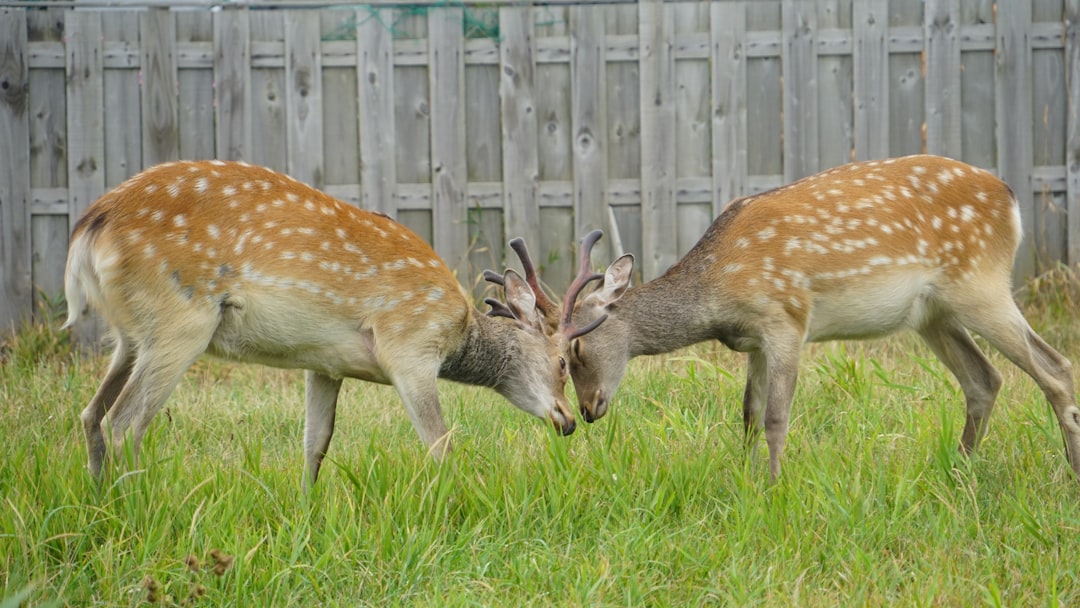Port Guide | Japan | Worth a Wander
Wakkanai

August C. W. | Editor
Published on 2025-11-05
Congratulations-you've officially arrived at the far-flung, windswept edge of Japan, a place so northern it's practically Siberian. Wakkanai, famed as the country's northernmost city, proudly sports wind that could blow your hat halfway to Vladivostok and seafood so fresh it's practically offended you haven't tried it yet. Once a scrappy trading post and now your gateway to Japan's rugged northern islands, this surprisingly charming outpost offers scenic bragging rights (on clear days, you can wave at Russia's Sakhalin Island across the water) and quirky monuments commemorating lost polar explorers and fearless adventurers-because, let's face it, you're basically one yourself if you've landed here by residential cruise. Shake off your sea legs along Wakkanai's breakwater promenade, savor some outrageously fresh crab at a dockside eatery, or set off on a refreshingly chilly hike around Cape Soya-just remember to bundle up; Wakkanai takes pride in being a city where the weather has character, and the stories you'll tell later even more so.

Japan has 16 Travel Advisories
Stay up to day with regional travel advisories.
Notes from the Editor
Wakkanai is a gateway to the northern islands of Japan and offers stunning views of Sakhalin Island, making it a scenic destination for travelers.
Where do cruise ships dock in Wakkanai?
Port Name Wakkanai
Country Japan
Region East Asia
Ship Terminal Wakkanai Ferry Terminal
Port Type Dedicated port
Accessibility The terminal is approximately 3 km from Wakkanai city center, accessible by local bus and taxi services.
What's the weather like in Wakkanai?
Best Season to Visit Summer (June to August)
Climate Wakkanai experiences a humid continental climate with cold winters and mild summers.
Weather Notes Summer months are generally pleasant; however, typhoons can occasionally occur in late summer, bringing unpredictable weather.
Temperature Range 55-75F (13-24C)
High Temp 78F
Low Temp 23F
Average Temp 50F
What do I need to know about Wakkanai?
Language Japanese
Currency Japanese Yen (JPY)
Card Widely Accepted 1
Population 37,000
Timezone JST (UTC+9)
How do I get around Wakkanai?
Local buses, taxis, and car rentals are available.
What are The Best Things to do in Wakkanai?
Discover what you should do while you're in Wakkanai.
Historical and cultural landmarks
Cape Soya Monument | Editor Highlight

August C. W. | Editor
Published on 2025-11-05
Best Time to Go
All Day
Cost
Free
Activity Level
Accessible
Where to Book
On Arrival
Journeying to the Cape Soya Monument feels oddly like achieving a personal, if incredibly niche, triumph-you're not scaling Everest, but standing at Japan's windswept, northernmost point has a peculiarly satisfying ring to it. Perched on the lonely edge of Hokkaido, where breezes (and your existential thoughts) fly straight from Siberia, you'll find yourself gazing toward Sakhalin and wondering exactly how many layers of thermal underwear constitute "enough." Bring a flask filled with hot sake or strong coffee and prepare your camera-early morning sunrises clutching valiantly at the horizon are spectacular here, and besides, arriving before the daily trickle of self-congratulatory tourists means unmatched bragging rights. Plan ahead by at least a day or two, but rest assured, your budget needn't stretch beyond transportation, warming snacks, and perhaps one kitschy souvenir (because who doesn't need a T-shirt that reads, "I Survived the Northern Tip of Japan"?). In the end, you don't come to Cape Soya solely for the panoramic ocean views or the rugged isolation-you come for the subtly thrilling fact you'll forever hold conversational leverage: "Oh, you've been to Tokyo? Well, let me tell you about my pilgrimage to the very top edge of Japan..."
Cape Soya Monument
Cape Soya, Wakkanai
Stand at the northernmost point of Japan and enjoy panoramic ocean views.
Distance from Terminal: 20.1 miles
Russian Monument at Cape Soya
Cape Soya, Wakkanai
A symbol commemorating connections with neighboring Russia.
Distance from Terminal: 20.1 miles
Wakkanai Centennial Tower
4 Chome 12-12 Minato, Wakkanai
Experience panoramic city views from an iconic observation tower.
Distance from Terminal: 0.7 miles
Kita Bouhatei Dome
1 Chome-1 Kaiun, Wakkanai
Admire a remarkable architectural feature and coastal promenade.
Distance from Terminal: 0.2 miles
Wakkanai Herring Fishermen's Housing
N/A
Explore historic structures showcasing traditional Hokkaido architecture.
Distance from Terminal: 1 miles
Experiences you can't replicate elsewhere
Rebun Island Wildflower Tour | Editor Highlight

August C. W. | Editor
Published on 2025-11-05
Best Time to Go
Season
Cost
$50-$150 USD
Activity Level
Moderate
Where to Book
Online
You might think traveling to Japan's northernmost frontier just to stare at a bunch of flowers sounds like a trip your Great Aunt Mildred would plan after one too many cups of chamomile-and you'd be spectacularly wrong. Rebun Island isn't your average flowery stroll; it's a windswept volcanic outpost in the Sea of Japan where Mother Nature clearly went rogue, amassing alpine blooms typically reserved for mountaintops at sea level, producing colorful flora you won't find anywhere else in the world. June to August is the sweet spot, when the notoriously fickle weather eases just enough to let the island burst into fervent life, and the hills look as if some frenzied Impressionist painter attacked them after a sake-fueled bender. Book your tour at least a month in advance, aim for early morning when the mist still clings romantically to the cliffs-and, for the love of all things botanical, pack sturdy shoes, layers of clothing, bug spray, and a decent camera, because your smartphone won't do these blooms justice. Budget a reasonable ¥5,000-¥8,000 per person for a guided hike, and trust me: even if flowers aren't your thing, the spectacle alone-the riot of violet Rebun lady's slipper or the absurdly rare yellow Rebun edelweiss-makes for an unbeatable anecdote during happy hour back home. After all, how many people can casually drop, "Oh yeah, I went flower-viewing at that remote Japanese island where alpine plants defy logic," into casual conversation over lukewarm office coffee?
Wakkanai Port Market
1 Chome-6-28 Minato, Wakkanai
Sample fresh seafood unique to the northern region of Japan.
Distance from Terminal: 0.1 miles
Wakkanai Fukuko Ichiba
5-11 Chuo, Wakkanai
Enjoy local seafood specialties at this vibrant market.
Distance from Terminal: 0.3 miles
Noshappu Cold Water Aquarium
2-23 Noshappu, Wakkanai
Explore marine life adapted to extraordinarily cold waters.
Distance from Terminal: 2.5 miles
Rebun Island Wildflower Tour
N/A
Discover rare alpine flowers only found in this region during summer.
Distance from Terminal: 37.5 miles
Lamuey Traditional Ainu Cuisine
N/A
Taste dishes prepared with traditional Ainu recipes, indigenous to northern Japan.
Distance from Terminal: 1.8 miles
Adventure and Outdoor Activities
Soya Hills Hiking Trail | Editor Highlight

August C. W. | Editor
Published on 2025-11-05
Best Time to Go
Morning
Cost
Free
Activity Level
Easy
Where to Book
On Arrival
If you're wandering through the northern reaches of Japan and tire of impeccably polite robots and meticulously-packaged convenience store sushi, the Soya Hills Hiking Trail is your unapologetic escape route-one that feels less "Lost in Translation" and more "Lord of the Rings," minus the orc invasions. Stretching lazily across Japan's northernmost tip, these gentle, grassy undulations offer views that flirt shamelessly with Siberia when visibility cooperates. Head out early in the morning, when the landscape wakes up under a gauzy fog that makes every Instagram post look like an indie film still; or better yet, venture out in late afternoon to catch the hills in their most flattering, golden-hour attire. Though you won't exactly risk Everest-grade frostbite, bring layers-weather in Soya can flip from pleasant to petulant quicker than a Tokyo train conductor's mood if you're late. Budget-wise, the hike costs nothing but calories, freeing up your yen for post-hike ramen or perhaps a commemorative bottle of sake to toast your intrepid northern wanderings. You'll walk where ancient Ainu hunters once strolled, gaze over views that inspired generations of haiku poets, and (just maybe) ponder why you didn't make slightly fewer stops at convenience store snack aisles before embarking. Even if gentle hills aren't quite your adrenaline-junky jam, hiking Soya Hills guarantees you a postcard-perfect story and Instagram bragging rights that few travelers ever claim.
Soya Hills Hiking Trail
N/A
Hike gentle rolling hills with views unique to northern Japan.
Distance from Terminal: 18.7 miles
Soyamisaki Wind Farm
N/A
Witness renewable energy generation at one of Japan's northernmost wind farms.
Distance from Terminal: 19.8 miles
Sea Kayaking Near Rishiri
N/A
Enjoy kayaking around the spectacular volcanic coastline.
Distance from Terminal: 33 miles
Cycling Tour Along Wakkanai Coastal Road
N/A
Cycle along scenic coastal routes with gorgeous summer views.
Distance from Terminal: 0.5 miles
Overnight Trips
Rishiri and Rebun Islands Excursion | Editor Highlight

August C. W. | Editor
Published on 2025-11-05
Best Time to Go
Season
Cost
$150-$300 USD
Activity Level
Moderate
Where to Book
Online
There are some things in life, dear traveler, for which you're allowed-and perhaps even encouraged-to go a bit out of your comfort zone, and hopping a ferry to the remote Japanese islands of Rishiri and Rebun certainly qualifies. Perched off the northern tip of Hokkaido, these two rugged outposts rise dramatically from the sea in defiant volcanic peaks and windswept coastal cliffs, as though Nature herself intended them as rough drafts but was so pleased she left them exactly as-is. Aim to arrive early morning-this is one of those rare and delightful places where sunrise still beats Instagram crowds-and book your ferry tickets (and quirky ryokan accommodations) at least a month ahead because island hospitality isn't something you improvise last-minute. Pack sturdy boots, layers suitable for four seasons in a single afternoon, snacks that don't crumble in your backpack, and plenty of yen (figure around ¥25,000 for ferry, stay, and meals) because your credit card is just a shiny plastic souvenir here. Yes, the wind is fierce, sushi joints scarce, and the Wi-Fi connection so spotty you'll suspect it's personal, but these islands boast alpine meadows exploding with wildflowers in summer, hikes delivering vistas that practically scream for a Hayao Miyazaki film backdrop, and bowls of steaming uni-don fresh enough to make you swear off city conveyor-belt sushi forever. If that's not enough, ponder this: every traveler needs a few tales worth embellishing at dinner parties, and nothing spices up your narrative quite like uttering the phrase "that time I was stranded overnight on a Japanese volcano island."
Rishiri and Rebun Islands Excursion
N/A
Overnight trip to explore remote islands known for stunning natural beauty.
Distance from Terminal: 35 miles
A Little Extra
Onsen Experience at Wakkanai Hot Springs
2-7 Hamamiyauchi, Wakkanai
Relax at Japan's northernmost hot spring.
Distance from Terminal: 3 miles
Gourmet Soft-Serve Ice Cream
Various locations
Taste unique Hokkaido dairy products through local delicious soft-serve ice cream.
Distance from Terminal: 0.3 miles
Japan Regional Tip
Certain over-the-counter medicines, such as medication containing pseudoephedrine. Prohibited or restricted; may require official documentation and permission.